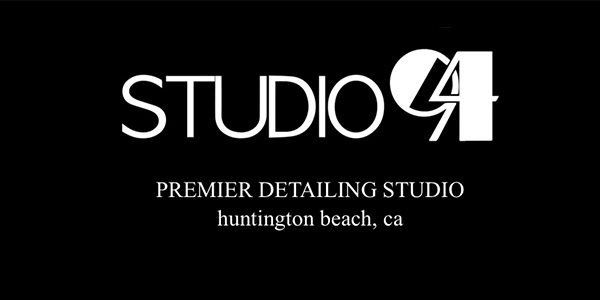As a business owner, there are a lot of things beyond your control that may affect your business. You cannot control a slowdown in the economy or the number of competitors around you. But, customer service is 100% within your control. Business these days is fiercely competitive; therefore, no business can afford to lose a customer. Although most companies know they can’t afford to lose any customer, many companies don’t take consumer complaints seriously, in-house or online.
Creating relationships and exceeding expectations
Exceeding a complaining customer’s expectations is a strategic principle of any business.
I’ve been to many carwashes when, while I am talking to the owner, a customer approaches with a complaint and asks for the person in charge. To my surprise, some owners deny that they are the owner and point to the manager to handle the issue.
The most loyal customers in any business are those who had a bad experience that was solved in a manner that exceeded their expectations. These customers become the best word-of-mouth advertisers and promoters of the business. Customers who have their complaints brushed off or are not taken seriously will let the whole world know about their awful experiences by leaving negative reviews online (even if many of the things documented aren’t true).
The power of reviews
A few years back, before the internet and social media emerged in popularity, upset customers would spread the word of their experiences to people close to them. Today, opinions and thoughts can reach hundreds or thousands of people in a matter of minutes. Consumers who check online reviews before choosing a business trust these reviews even more than they trust their own friends or relatives. Ultimately, it is up to the business owners to decide what kind of word-of-mouth and reputation they want to have from those customers.
In normal conditions, it takes 12 positive reviews to make up for one negative review. To make things worse, Yelp is a consumer platform. Yelp uses automated software to choose what reviews to recommend, and those reviews that don’t make the cut are removed, according to my research. If you go to your business Yelp account, scroll to the bottom and click on “not recommended reviews,” you can count the total positive and negative reviews. You will notice that in most cases, Yelp removes between 4 to 18 times the positive reviews for each one negative review removed. Based on this fact, it may take about 15 positive reviews to make up for one negative review.
Therefore, responding immediately to every negative review to resolve the issue and hopefully have the assessment either removed or turned into a positive review is as important as receiving 15 positive reviews. In a few cases, you may try to email Yelp to have the review removed if it violates its terms of service.
Related: Wash Wisdom: How to handle negative reviews on Yelp
You are in control
“I can’t control the customers’ blog and social media, can I?”
The answer is yes, you can. There is no such thing as chance or luck. Everything happens according to the law of cause and effect. The law of cause and effect states that our actions dictate what the reaction would be. You are in control of your actions, and the reaction is a direct result of how you handled the problem. That is what Buddhists call “karma” and what the Bible preaches as, “You reap what you sow.”
When a customer approaches a manager with a complaint, such as a scratch on the paint, managers — as emotional human beings — immediately take a defensive position to protect the business and declare that the scratch was already there and in no way could the equipment have caused it. This causes the customer to leave angry and upset. The end result: The manager wins the battle, but the business loses the war.
Every great structure begins with a blueprint, and then a strong foundation is built to sustain the structure. It’s the same with every great business: It starts with a blueprint (big picture) and a step-by-step plan (checklist) to ensure the success of the business. Turning a complaint into an opportunity is a win-win solution for everyone involved, and it is an essential part of running a successful business.
There are some facts every business owner should know about how to turn a complaining customer into a most loyal customer and a spokesperson for your business.
Fundamental rules for solving customer complaints
- Customers aren’t always right, but they always have to leave winners.
- Ninety-eight percent of all customers are honest. Would you punish 98% of the customers because of the 2% who are dishonest?
- If the customer truly believes that the damage happened at the business, regardless of whether it did or not, then the truth doesn’t matter at this point.
- Businesses are dependent on customers for survival.
- You cannot fire customers, but customers can fire you by choosing to go somewhere else.
- If customers leave upset, then your company loses and your competitor wins. Don’t allow your competition to win.
- Customers must leave your business happy, so they will come back.
- Keep the end goal in mind. What is the end resolution you would like to achieve?
- Every time a customer leaves upset, expect a negative review online. You want the outcome to be a loyal customer who will leave positive feedback online.
- It takes 12 positive reviews to make up for one negative review.
- Keep the emotions out of the equation, and do what is in the best interest of the company (a happy customer).
- If you doubt that the damage happened at the business, please do not argue with the customer. Keep your opinion to yourself.
- If the customer honestly believes the damage happened at the business, please do not argue with the customer to prove him or her wrong. Your job is to be the consumer’s advocate.
- The average person speaks 100 to 150 words per minute, yet a person can listen to up to 400 words per minute. Therefore, a customer has an ample amount of time to form an opinion about you based on your body language and tone of voice. Though we judge ourselves by our intentions, others judge us by our behavior. Be aware of your body language and tone of voice.
The different outcomes
For resolving an issue with a client, there are four different outcomes:
- Lose-Lose: Both parties lose.
- Win-Lose: The customer wins and the business loses.
- Lose-Win: The customer loses and the business wins.
- Win-Win: This is what every business owner must seek to accomplish.
Win-Win takes more energy and creativity to achieve than the other three. Win-Win doesn’t mean that you give in to what the customer wants — that’s called win-lose — or the customer gives in to your wishes — that is called lose-win — but that you find a better solution that both parties can agree on.
Better than compromise: synergize. Synergy is the working together of two or more things to produce a result greater than the sum of their individual efforts. I recommend reading “Seven Habits of Highly Effective People” by Steven Covey, which covers this subject in detail.
Customer types
There are three types of customers:
- Repeat customers: This refers to those who visit your business at least once every three months. They are the top 20% of your customers who bring in 80% of your revenue. Calculate the value of your customers to realize how much these customers are worth to you.
- Regular customers: Those who visit your business once or twice per year still have a lifetime value. Calculate their lifetime value, and then decide how to handle their issues. Make sure they leave happy as well by giving them each a carwash credit to use within a short period of time.
- First-time customers: Will they become part of the 20% group or the 80% group? Who knows? The real question is: Can you really afford to lose any of them?
Not all customers are equal, and one solution does not fit all. At the same time, you want to always come up with a win-win solution, because you can’t afford to have a bad reputation.
You always want to keep those repeat customers who are part of the 20% that are responsible for 80% of your income happy at any cost. What about regular and first-time customers? Are they really less important customers? Are they the daughters, sons or spouses of repeat customers? Did a raving fan customer refer them to you?
Because each situation is different, the following list will cover how to handle alleged damage on a customer’s car after the wash:
If damage did indeed happen at the business, then you should have procedures in place on how to handle the incident.
If the damage the customer claimed is easily repaired by your detailers, such as a headlight scratch; a scuff mark; or a sticky, gummy substance that looks like a scratch, assure the customer that you will fix it for him/her. First, explain why it did not happen at the carwash and how the wash process is safe; then, clean it or buff it out at no charge and maybe even give that person a free wash for next time.
If the damage was minimal, such as a broken side view mirror that can be purchased and installed for less than $50, would you want to lose a customer, all of his/her family and friends and get bad reviews online for such a small amount?
Make a deal with a nearby body shop that you trade services with to repair your damaged vehicles at wholesale prices.
Turn complaints into opportunities checklist
- If you track customers by license plate, generate a report to determine customers’ frequencies of visits and how much they spend.
- Approach the customer with concern and empathy.
- Apologize for whatever happened. Your apology is not an admittance of guilt.
- Introduce yourself, tell the customer your name and ask for his/her name.
- Call the customer by name.
- Assure the customer that you want to make sure he/she leaves happy and you want to earn his/her future business.
- Have the customer complete an information form with name, address, phone number, email address and incident information. The information form is a very important step of the process. Note: Do not call or name the form “Complaint Form.”
- Ask if the customer would like anything to drink while filling out the form.
- Ask the customer to walk with you toward his/her car (away from other customers).
- Listen to the customer without any interruption.
- Feed the information you just heard back to the customer and have him/her elaborate more. This shows empathy.
- Ask questions to clarify the story. This shows that you are listening and trying to understand.
- Ask if the customer saw it happen. Did anyone else see it happen? If yes, then excuse yourself to go talk to those witnesses before going any further. If there are no witnesses, go to the next step.
- Walk all around the car to check for other damages. Check for any damage near the alleged damage. If there is additional damage, ask if the customer was aware of it. Conclude if any of the existing damages caused the alleged damage. Do not discuss your findings with the customer at this time.
- Wait for the customer to tell his/her side of the story. Then say, “I listened to your side of the story; now may I talk?” Then say, “First, let me assure you that I appreciate your business and want you to keep coming back. I will do whatever it takes to make sure you leave here happy. I have been in business X years, and from my experience, this could not have happened at the carwash, and here are the reasons why:
- “The mark on the car is red and we do not have any red color polls or walls.
- “If your car was damaged by another car, we would have another customer complaining about his/her damaged car.
- “You see the damage here next to the alleged damaged? This is all part of the same incident (or the reason and the cause of the alleged damage).
- “The mirror has old cracks and marks on it, and that is what caused it to break. Do you see the numerous disclaimer signs we have? They all say that we cannot be responsible for these pre-existing damages.
- “The scratches here are circular, and our equipment washes the car in a horizontal direction.”
After you have listed your reasons, continue the discussion like so:
- “Walk with me and let me show you the equipment.” (Then, turn around and walk without looking back; the customer will follow. If the customer refuses to follow, then explain to them what you were going to show them.)
- “Please put yourself in my shoes; we have hundreds of customers who come in every day, and many times customers try to claim damages on us when it is not our fault. I’m not saying you are trying to do this.
- “I believe you are honest, and you truly believe that this happened over here. Am I right? And that is why I want to make sure I take care of you and keep you as a happy customer.
- “I hope you understand my position. From my experience, the damage costs about X dollars to repair. Our policy is that we do not pay cash for any damage that we believe we are not responsible for. I can give you credit for the same amount for you to be happy.” (Or, exceed the customer’s expectation and offer 150% credit.)
Note if that the customer seems very, very upset and out of control when you first approach him/her, the best way to handle it is by putting yourself in the customer’s shoes and feeling what he/she is feeling and let the customer know that. It is very frustrating to come in for a carwash and leave with damage. Then, follow up with the above step-by-step checklist.
However, if the “acknowledging the customer’s frustration” technique does not work and the customer is out of control, then the manager should take the information form from the customer and assure him/her that the owner or the person in charge will call him/her later to take care of the issue. Do this to avoid a major conflict at the business and for the customer to calm down before you try to synergize and come up with a win-win solution.
Increase positive reviews
Has your company ever received a one-star negative review that says something like, “I have been coming to this business for the last 10 years, and I have been very happy with the service, but today I got the worst service ever and will never go back”?
Then you ask yourself why, for the last 10 years, the customer has been very happy with your service and never bothered to leave a positive review. Ten years later, after one fluke and unintentional mistake and without giving you the opportunity to make it right, that person posted a negative review online.
When customers are happy with a service, they don’t feel obligated to leave a review, because they believe they paid for the service received. That was the least they expected to receive and nothing special. Even when customers’ expectations are exceeded, it is unlikely that they will go online to leave a positive review about their wonderful experiences. However, if a customer has a bad experience and doesn’t get the value for what he/she paid, that customer has to release all the anger and rage out of his/her system, so he/she goes online and posts a negative review.
Many loyalty programs in the market can help your business to send automated messages to customers after a service is provided to get feedback. These loyalty programs give the opportunity for businesses to hear back from upset customers before they go online and leave a negative review. At the same time, these loyalty programs encourage happy customers to leave positive reviews online via the provided links to social media platforms.
Loyalty app platforms also help increase the frequency of visits, customer retention, search engine ranking, first-time visits, dollars per transaction and much more. Keep working in your business, and invest in a loyalty program that helps you work on your business by automating many marketing strategies that will help increase your revenue and customer satisfaction. In today’s techno-world, these loyalty programs are considered a mandatory investment.
AJ Rassamni has over 30 years’ experience in the carwash business. AJ is a speaker, consultant and author of two books written specifically for the carwash industry: “Increase Business 30% in 30 Days” and “Dirty Cars Filthy Rich.” AJ is the president of the Central Blackstone Merchants Association. He is also the CEO of both Great American Carwash as well as an innovative technology company, MyLoyaltyApps, the sole purpose of which is to create customized apps that automate the marketing strategy of a business to increase positive reviews, search engine ranking, loyalty, dollars per transaction, the number of first-time customers and revenue. You can contact AJ via email at [email protected] or [email protected] or text (559) 284-1919.














